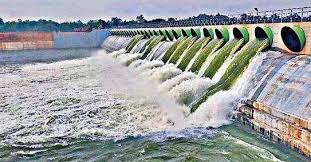Morand-Ganjal Irrigation Project: A Threat to Tiger Habitats
Current Affairs NationalPosted by newadmin on 2025-02-12 08:47:01 |
Share: Facebook | Twitter | Whatsapp | Linkedin Visits: 29

The National Tiger Conservation Authority (NTCA) has expressed serious concerns over the Morand-Ganjal Irrigation Project in Madhya Pradesh, citing its potential threat to crucial tiger habitats and ecological corridors. This project poses a significant risk to the connectivity between the Satpura and Melghat Tiger Reserves, which is essential for the movement and genetic exchange of tigers. The NTCA has urged authorities to consider alternative sites that balance developmental needs with conservation priorities.
Originally proposed in 1972 and approved by the government in 2017, the Morand-Ganjal Irrigation Project is designed to improve irrigation for 211 villages across Hoshangabad, Betul, Harda, and Khandwa districts. The plan includes the construction of dams on the Morand and Ganjal rivers, which will result in the submergence of over 2,250 hectares of forest land. The NTCA’s analysis has identified the project site as an area occupied by tigers, emphasizing that the loss of this habitat would disrupt vital corridors connecting the two reserves. Such disruption would not only threaten genetic diversity but also impact the stability of the overall tiger population.
Both the Satpura and Melghat Tiger Reserves have seen a gradual recovery in tiger numbers, largely due to successful voluntary village relocations that have allowed wildlife to thrive. However, the NTCA warns that habitat fragmentation caused by the irrigation project could reverse these conservation gains. Additionally, the project will lead to the displacement of over 600 members of the Korku tribal community, depriving them of their traditional lands and livelihoods. The affected forest areas are not only vital for tigers but also support diverse wildlife and a rich biodiversity that would be lost due to submergence.
In response to these concerns, the NTCA has strongly recommended exploring alternative sites that would have a lesser ecological impact. It stresses the importance of prioritizing biodiversity conservation while meeting developmental objectives. Striking a balance between infrastructure expansion and the preservation of critical wildlife habitats is essential to ensuring the long-term health of both the environment and local communities.
Search
Categories
Recent News
- Bihar's Top Cop Opens Doors to Public Grievances
- Hyderabad Gears Up for Presidential Visit: Traffic Diversions Announced
- Hyderabad Expressway Gridlock: Three-Car Pile-Up Causes Chaos
- Hyderabad Gears Up: Security Measures for Presidential Visit
- Hyderabad's Rs 23 Lakh Scam: Fake Trading App Dupes Investors
- Pinkathon Hyderabad: Empowering Women, One Step at a Time
- Hyderabad's Drug Supply Chain Unravelled
- Hyderabad's New Year's Eve: Safety Meets Celebration
Popular News
- Navigating IPO Market Dynamics Amid Volatility and Regulatory Changes
- Innovative Green Practices and Environmental Initiative
- Massive Worldwide Microsoft Outage Disrupts Multiple Sectors
- తెలుగుదేశం పార్టీ - పేదరికాన్ని నిర్మూలించడంలో వాగ్దానం
- Universities Embrace Remote Learning Technologies Amidst Ongoing Pandemic